Enter the Hezbollah Museum. Yes, I said Hezbollah. Actually, the official name of the museum is the Mleeta Resistance Landmark. If you’re like most people, including yours truly, you did not even realize that such a museum existed. Much of the news you hear about Hezbollah, the Islamic militant group based in Lebanon, is tied rightly or wrongly to violent or terrorist activities.
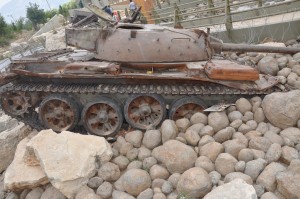 |
| At the Mleeta Resistance Landmark |
I was well into my 2 month visit to Beirut before I heard someone mention this museum. Huh?? I don’t know much about the Hezbollah political organization or its military wing, but I surely didn’t think they had a museum with a visitors center, guided tours and a gift shop. I’m not saying I support this organization…but I AM saying that I definitely wanted to check this operation out.
To get to this museum, its not like you just take a bus or taxi to central Beirut and get off in front of a large building. No – this is a trip you have to plan a bit in advance because its about 20 miles away from the city of Siada which is a 25 mile trip from Beirut. With a mix of shared taxis, shared vans, walking and a hired driver, you can get to the museum in about 2 – 3 hours. Much of the journey is cheap with the shared vans and shared taxis costing around $2.00 USD per person. The hired driver you negotiate with in Saida will be the most expensive part of the journey – I think my friend and I spent about $25.00 USD each for a ride there and back.
I am not sure what I was expecting when I arrived at the museum, but the first things I remember seeing in the parking lot were a bunch of donation collection receptacles that were shaped like bullets…hmmm…That kinda tells you something about the exhibit you’re about to enter. Or does it?
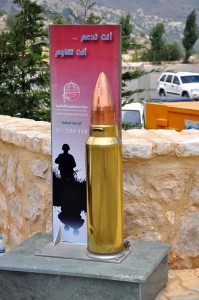 |
| Please leave a donation in the bullet |
The museum itself is made up of four parts, three of which are outdoors. The first section, called the Abyss, is a huge outdoor pit artistically strewn with Israeli tanks, shrapnel, weapons, rocket launchers and bullet casings. All of these items were collected by the Islamic fighters as they battled for the withdrawal of Israeli soldiers from Southern Lebanon.
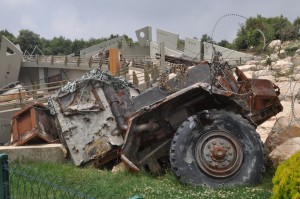 |
| Close up of an Israeli tank |
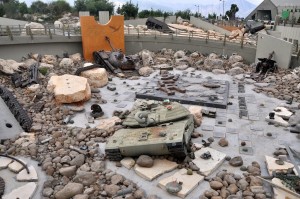 |
| Tanks and shrapnel in the Abyss |
Once you’ve finished walking around The Abyss, follow a path that will take you to into a wooded section where fighting between the Lebanese and Israeli forces took place. Along the way you will see manequins dressed like soldiers which are eerily realistic at first sight, underground bunkers, weapons and signposts explaining important milestones in the battles. The meandering path is easy to walk, well marked and almost pleasant if you can forget for a second that you are in the middle of what was once a war zone.
 |
| Informational sign along the pathway |
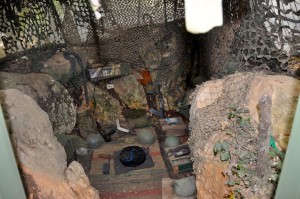 |
| Replication of a soldiers quarters in the woods |
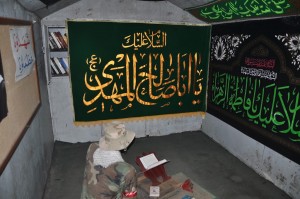 |
| Underground bunker for where soldiers studies and prayed |
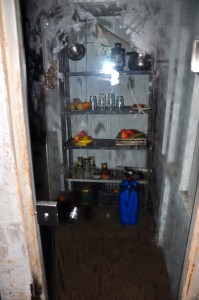 |
| Food storage in the underground tunnels |
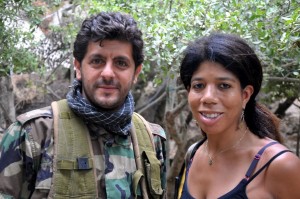 |
| Ha d to get a picture with THIS soldier/actor |
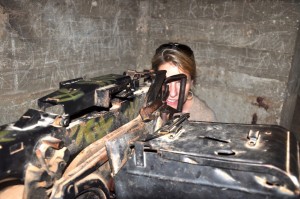 |
| Jen, my partner in crime, had to check out the artillery |
After winding your way through the wooded area of the museum, you will follow the path towards the enclosed multi-media center. The center constantly loops video and audio recordings from the fighting and displays weapons, maps, battle plans and media quotes regarding the war.
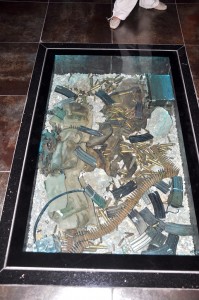 |
| In floor displays of the weapons of war |
The final area Jen and I visited was Martyrs Hill, an area which, according to the Mleeta website, represents the ascendents of the martyrs from the time of occupation. Once you climb to the top of the stairs, you are on a wide observation deck where you can see for miles into the Mleeta valley.
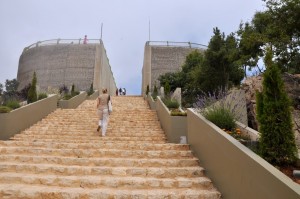 |
| Steps leading up to Martyrs Hill |
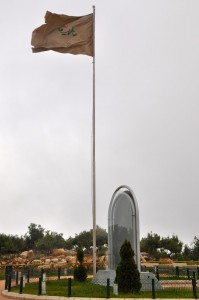 |
| Battle flag atop Martyr’s Hill |
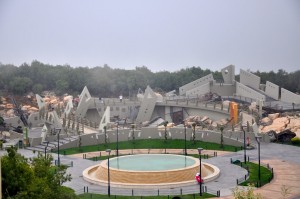 |
| View of the Abyss from Martyrs Hill |
Overall, I was very impressed by the quality and set up of the museum. It was well organized, easy to explore and while I can’t say it was a completely unbiased presentation, I feel like it did get a good insight to one side of the fighting. After my trip, many people asked me if it was safe to visit this museum. I can honestly say that I did not at any time feel uncomfortable or fearful while at the site.
My only complaint about the museum, well, other than the complaint that the gift shop was closed the day we went, was that I did not learn as much about the history of the Hezbollah organization as I had hoped. The exhibit is focused primarily on the fighting that happend over many years in this area, but I would have liked to learn more about Hezbollah’s roots and its place in Lebanese society and in world history. But still, I was looking for an unusual museums and I feel pretty confident that I found one. What about you? Any unusual or off the beaten path museums that you can recommend?








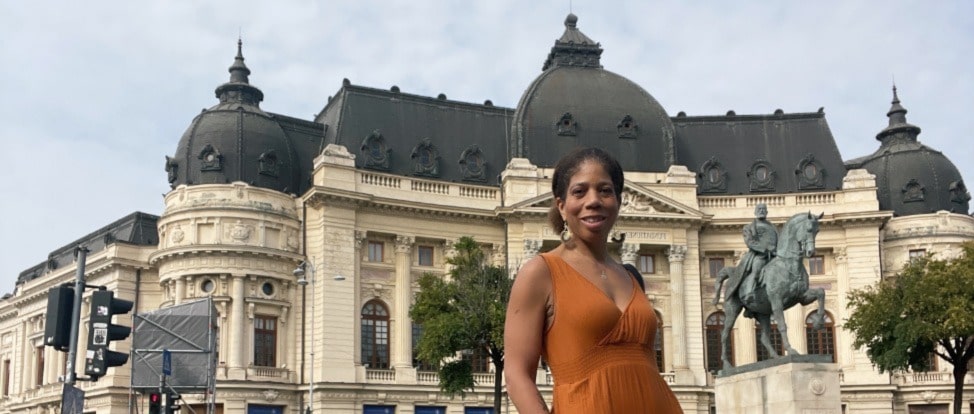
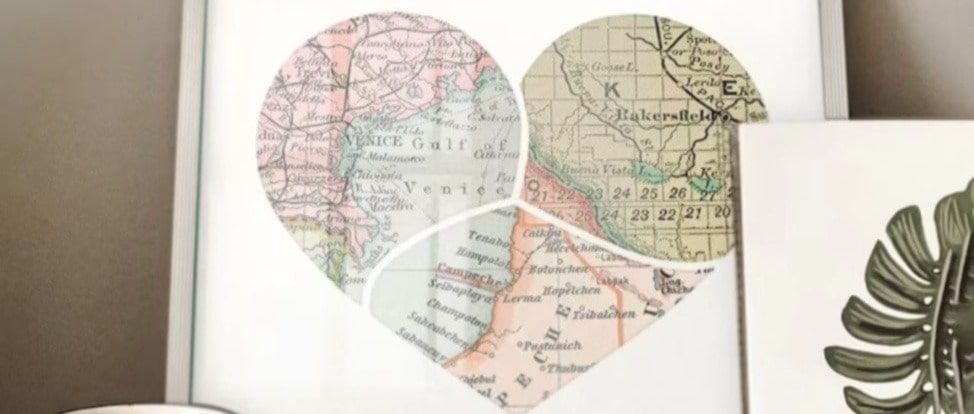
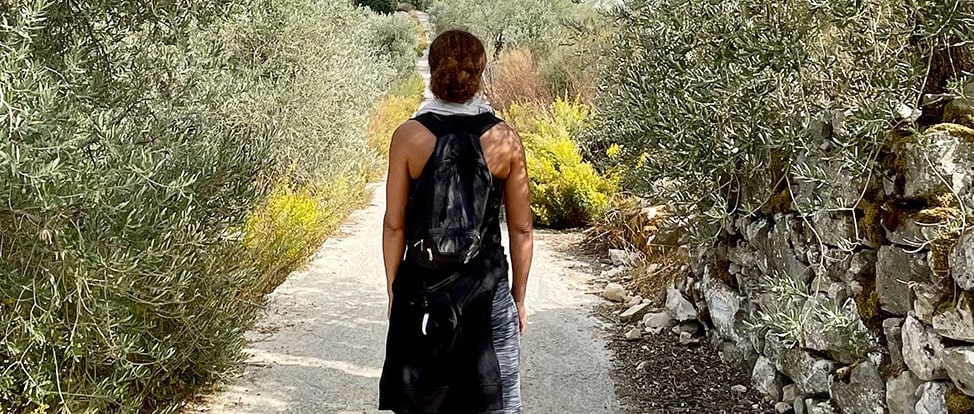
This is an interesting museum for sure. Reading your last paragraph, I think I’d agree with your opinion if there’s not too much about the historical and cultural aspect of Hezbollah. Still, at least you got some good photos and an insight into a side of the debate that we rarely see presented in an unbiased way in western media.
Thanks for stopping by, Tom. It sounds like you’ve made it to the museum too? Glad you liked the article and pictures. I was a bit hesitant to go to this museum, but it the end I was quite glad that I did. I learned just enough to make me want to learn more!